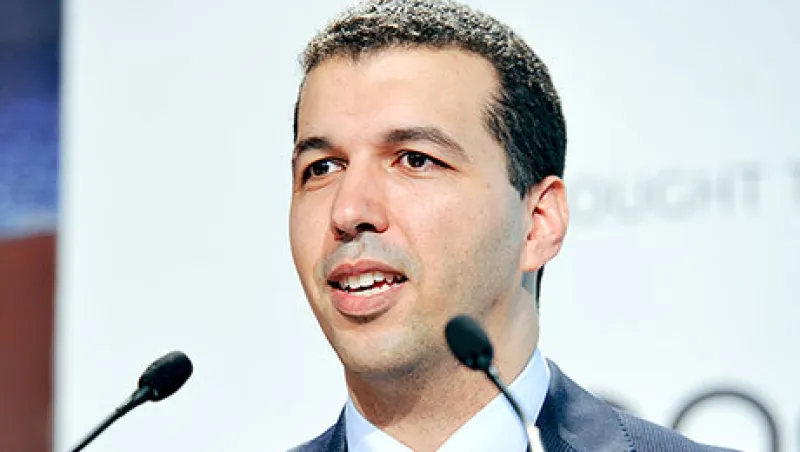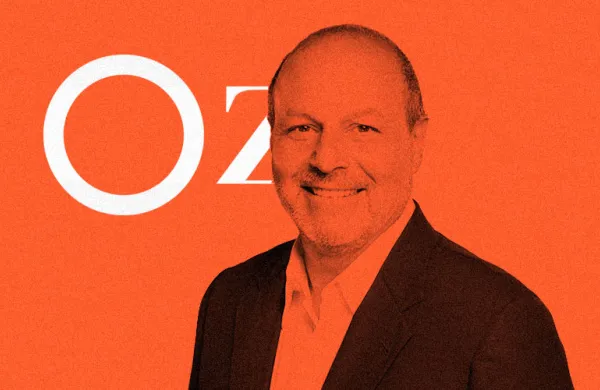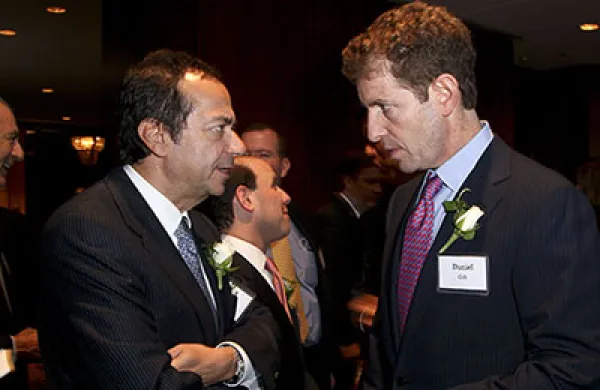As millions took to the streets throughout North Africa during the Arab Spring of 2011, the Kingdom of Morocco, untouched but not unshaken, devised a plan to revamp the country’s infrastructure and promote tourism. That year the government launched the $1.8 billion Moroccan Fund for Tourism Development. It also asked for help from a who’s who of Gulf sovereign wealth funds — the Kuwait Investment Authority, Abu Dhabi’s International Petroleum Investment Co., Saudi Arabia’s Public Investment Fund, and the Qatar Investment Authority — with combined assets estimated to top $1 trillion.
The gang dropped a cool €2.5 billion ($2.6 billion) on joint venture Wessal Capital, each kicking in about €500 million. Wessal has since deployed about half of its assets in development projects, including an upgrade of Casablanca’s ports.
“We believe this size of collaborative co-investment between institutional investors is taking off in a big way,” says Tarik Senhaji, CEO of the Moroccan tourism development fund, which in 2016 rebranded as Ithmar Capital and broadened its investment scope to include all productive sectors of the economy.
At this month’s United Nations climate change summit in Marrakesh, Morocco, Senhaji unveiled a new partnership with the World Bank Group to launch a green investment fund. Dubbed the Green Growth Infrastructure Facility for Africa (GGIF), this vehicle will span the African continent.
“With the GGIF structure we are going to push the boundaries to have collaborative co-investment at different dimensions,” Senhaji says, referrring to alliances with public and private entities at various stages of the investment process.
Morocco’s deep-pocketed allies let Ithmar punch above its weight with the Wessal venture. Through the GGIF, Senhaji hopes again to stand on the shoulders of giants. Ithmar is reaching out to its old partners in the Gulf as well as trying to attract private investors.
“We believe international sovereign wealth funds will be attracted because of the quality of our organizational structure,” Senhaji says. “Collaborating with strategic African investors in sourcing opportunities will be a big plus.”
The news received a ringing endorsement in a letter from the International Forum of Sovereign Wealth Funds (IFSWF), the lead industry group, which also counts Ithmar as a member.
“I am pleased to observe the proposed agreement between the World Bank and the signatories with respect to the creation of the Green Growth Infrastructure Facility,” Adrian Orr, CEO of the New Zealand Superannuation Fund, wrote as chair of the IFSWF. “Sovereign wealth funds are natural investors in infrastructure projects on account of their long investment horizon, sovereign status, and relatively little need for portfolio liquidity.”
When the $22.9 billion Kiwi fund hosted the IFSWF’s annual gathering in Auckland earlier this month, it put climate change high on the agenda. Long-term investors the world over have been working to weed out environmental risks in their portfolios.
“Sovereign wealth funds — having a long-duration portfolio — have to look at this,” Senhaji asserts. “A number of funds already have, but now we are seeing a more systematic approach from everybody.”
The Moroccan government created Ithmar in 2011 to lure institutional capital inside its borders. “Traditionally people think of sovereign wealth funds as coming from excess capital and oil revenues,” says Senhaji, who’s been at the helm since the beginning. “Our original idea back then, which we had on a small diagram in pencil and paper, was if we create something that is 50 percent private equity GP and 50 percent sovereign wealth fund, that could be interesting.”
With plans to raise between $1 billion and $2 billion, the GGIF aims to be one of the largest such funds on the African continent, and Ithmar’s Senhaji reports broad interest from institutions and private investors across the globe.
“It’s not done until they sign on the dotted line, but we’re feeling comfortable,” he says. “Infrastructure is very popular right now.” The fund will cover green infrastructure from solar panels to wind farms and predominantly focus on early-stage ventures.
Renewable energy projects ready for investment in Morocco total some $25 billion, according to BEYA Capital, a Casablanca-based advisory and investment firm created in 2011 to facilitate investments in Africa’s green energy infrastructure.
“The needs are huge, but I see $100 billion that is feasible and ready for investment in Africa in the next 24 months,” says Mustapha Mokass, BEYA’s founder and CEO.
Although the demand from sovereign wealth funds exists, investing in Africa is rife with obstacles. “The key questions are deal flow and having good projects,” Mokass says. “More than anything else, they are waiting for good projects.”
BEYA works with project developers and global donors to lay the groundwork for institutional investment. At the recent U.N. summit the firm announced the launch of a $500 million fund for climate change adaptation financing called the Marrakech Investment Committee for Adaptation Fund.
Geopolitical and macroeconomic factors from country to country are key determinants of the return potential for these sorts of projects. Morocco and South Africa sit on the lower end of the region’s risk-reward spectrum, according to Ithmar’s Senhaji, who also points to interesting opportunities in Côte d’Ivoire, Senegal, and Tanzania. He hasn’t given up on Nigeria, despite commodity prices’ nose-dive and the economy’s death spiral, which put the nation in the high-risk camp.
“That’s a challenging market,” Senhaji notes. “But if you get local partners, it’s a place you can find very good returns.”
Tackling climate change ranks high on Morocco’s list, but perhaps even higher is gaining reentry to the African Union. Morocco left the diplomatic organization in 1984 over an ongoing sovereignty dispute about the Western Sahara.
“Under the leadership of His Majesty the King Mohammed VI, Africa has become a ‘strategic priority for Morocco,’” Ithmar said in the press release announcing the GGIF. “Relying on its growing economy and European proximity, the Kingdom is working towards becoming a competitive African hub.”
King Mohammed has been lobbying to get back in the organization’s good graces, hoping his country can reenter as early as this summer. That would be a boon for trade and cross-border investment. “For us at Ithmar Capital, it would certainly lead to big value creation over the next few years,” Senhaji says of AU membership.
Patrick Schena, co-head of the Fletcher Network for Sovereign Wealth and Global Capital at Tufts University, is watching Ithmar’s first pan-African venture: “Given the institutional interest in infrastructure and the increasing focus on green investment themes, it will be interesting to see whom, among both private and even sovereign investors, Ithmar and the World Bank attract to the fund,” he says.






